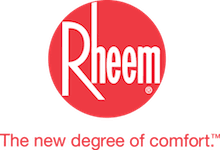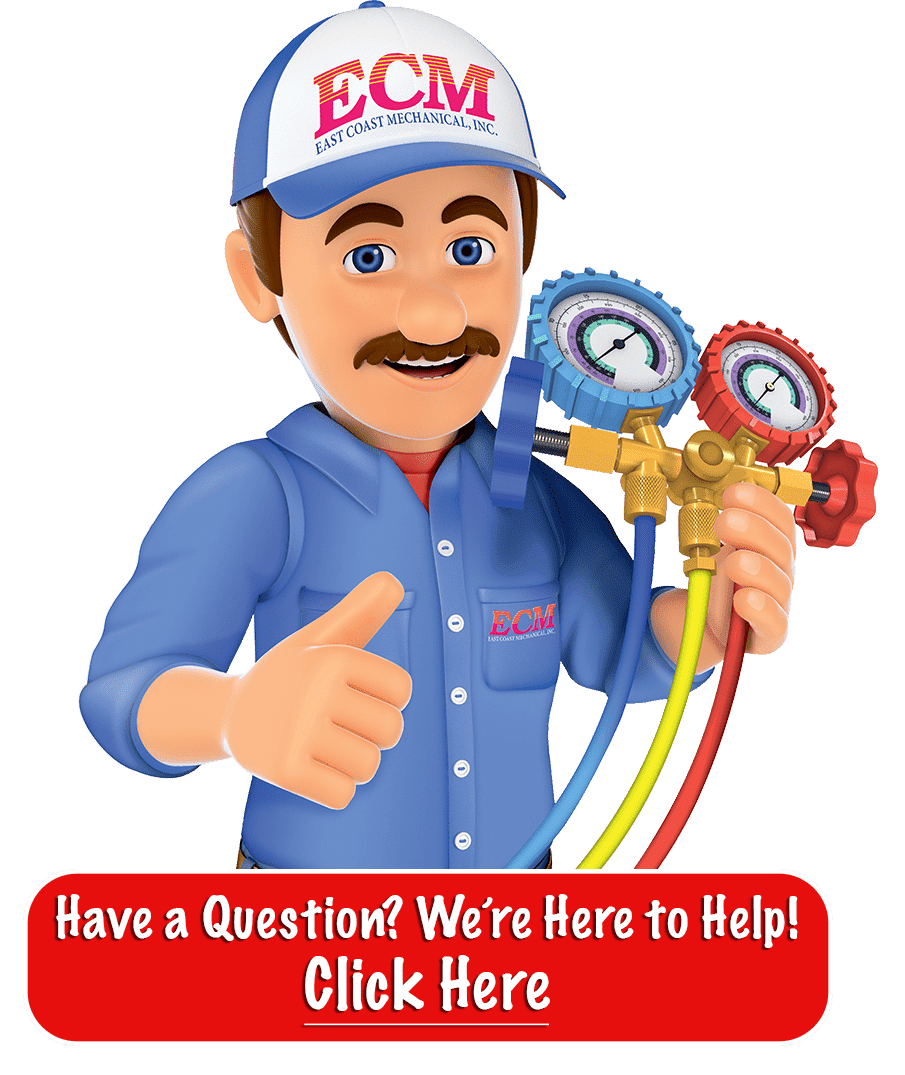Our senses are not reliable enough to tell how good the air is in our environment. Therefore, we need the Air Quality Index (AQI) as an accurate measurement. It is a system used to measure the concentration of pollution contained in the air of one specific area.
Limiting yourself to being indoors doesn’t guarantee your protection against air pollutants. On the contrary, according to the EPA, indoor AQI can be five-times worse than the outdoors. Pay attention to the cleanliness of your home, and allow a good circulation on a daily basis to keep your indoor air at a healthy level.
- What is the Air Quality Index?
- How Does Air Quality Monitoring Work?
- How is Indoor Air Quality Testing Done?
- Are Air Purifiers Worth It?
- Are Air Purifiers Important?
- How Do I Maintain My Air Filter?
- What’s MERV Rating?
- How Can I Avoid the Risk of PM 2.5 Inhalation?
- What Does UV Sterilization Do?
- What Is REME HALO LED and How Does It Work?
What is the Air Quality Index?
The fires in the West Coast of the United States has led to poor air quality, not just in nearby regions, but also across the country. Smoke, dust, and harmful air particulates create gray and orange skies that, unbeknownst to some, are causing respiratory infections and breathing problems.
The Air Quality Index is defined as how clean, or how polluted, the air is in a certain area. The AQI also determines the effects of breathing the outdoor air, and what it can do to your health. Experts determine the AQI forecast of different regions and cities across the U.S. and in Canada. The figures range between 0 and 500. The lowest rating 0, means the air is cleaner. The highest rating, 500, means the air is more polluted.
There is also a World Quality Index that determines air pollution ratings in other countries worldwide.
How Does the Air Quality Index Work?
The AQI is the yardstick upon which the level of air pollution is measured. It is continually updated to inform us of any health issues we should be concerned about regarding the air we breathe in our environment. The measurement standard is that anything below 50 AQI represents good air quality. However, an AQI that exceeds 300 is an indication of hazardous air quality.
Generally, for every pollutant with a 100 AQI, the significance is ambient air concentration equal to that of short-term national ambient air quality. AQI values under 100 are satisfactory, while values above 100 AQI is considered unhealthy.
What the Different AQI Categories Mean
● Green AQI – Good – 0 to 50: there is little to no health risk of air quality
● Yellow AQI – Moderate – 50 to 100: the air quality is acceptable, but sensitive people may experience breathing issues
● Orange AQI – Unhealthy for Sensitive Individuals – 101 to 150: children, older adults, and those with lung and heart disease are at risk
● Red AQI – Unhealthy – 151 to 200: the air quality is deemed unsafe for everyone
● Purple AQI – Very Unhealthy – 201 to 300: there is a serious health risk for all
● Maroon AQI – Hazardous – 300 and above: evacuation and an emergency warning are imperative
What Are the Major Pollutants?
Contributing factors to a high AQI score are noted below. The major air pollutants are regulated by the Clean Air Act. These include:
● Nitrogen dioxide
● Sulfur dioxide
● Carbon monoxide
● Ground level ozone
● PM2.5 and PM10 particle pollution
What You Can Do With AQI
Wearing a face mask can protect the wearer against air pollution. When the air is compromised, take care of your respiratory and heart health. Those who are more vulnerable should do their best to completely avoid exposure.
When the AQI score falls on the unhealthy side of the scale, it is recommended to reduce exposure to poor air quality. This can be done by minimizing outdoor time, especially children, those with asthmatic symptoms, and older individuals.
How Does Air Quality Monitoring Work?

With the rising concerns of pollution, we can agree that air quality monitoring is vital. Both the outdoor air of the city, and the indoor air at home, can be harmful if highly polluted. Monitoring both are equally important, so that you know when to be cautious.
How to Monitor
The basic principle of monitoring air quality is by measuring the amount of contaminants in the air. There are many kinds of pollutants, and each one requires different technologies to track. Not to mention that as the air keeps moving, its quality may fluctuate from time to time. Hence, it requires an elaborate system to perform air quality monitoring around the clock.
Moreover, there are different complexities between indoor air and outdoor air. Therefore, the approaches used for both are different. Let’s discuss the matter further.
Indoor Air Quality Monitoring
The quality of indoor air may be different from one building to another. Sometimes, even different rooms in the same building can have variations in air quality. Consequently, the measurements should be done individually in order to get the most accurate results.
Fortunately, air quality monitors are quite common to find on the market. All you need to do is buy one and install it at home. Keep the device running at all times so that it continuously monitors your indoor air. The result will be displayed.
Different models may have different types of pollutants they are able to monitor. Most basic coverage includes temperature, humidity, carbon dioxide, formaldehyde, and a few other types of chemical compounds. Some models can also monitor the level of carbon monoxide.
Outdoor Air Quality Monitoring
The open air outside is trickier to monitor because more factors affect it, such as wind velocity, weather, climate, and the day-to-day activities of the people in the area. It requires mature technology and a large interdisciplinary team. Due to its complexity, it might be impossible to get an accurate measurement for a specific location, such as the backyard of your house. The data of outdoor air quality monitoring usually covers an entire city, or at the very least, a region within a city.
Most of the data for the measurement comes from satellites. For example, the Joint Polar Satellite System (JPSS) collects information about the number of particles floating in the air, such as airborne dust, industrial smoke, and ashes from a volcanic eruption. The monitoring also needs to combine such data along with rain volume, current wind speed, and other meteorological factors.
Staying up-to-date with continuous air quality monitoring will not be enough to stay healthy, because the source of the pollutants need to be narrowed down first. Where poor indoor air is easy to solve by improving the ventilation system, and many other simple tricks, bad outdoor air is a different story. It takes a lot of effort, commitment, resources, and time to improve it. Considering the health effects of poor air quality in your area, you may need to consider relocating to an area where the air is cleaner, if possible.
How is Indoor Air Quality Testing Done?

You might have heard about how indoor air quality can be five-times worse than the outdoor air of an industrial city. Many factors can lead to such an unfortunate condition, and we can’t know for sure how badly things can turn out. Instead of guessing, you might need to conduct some indoor air quality testing to see if your house is still healthy or not.
As a start, here are some simple techniques you can use at home:
1. Indoor Air Quality Monitor
An IAQ monitor is an electrical device that detects various issues with your indoor air. Different models provide different monitoring services. The basic aspects that are monitored are: the amounts of particulate matter, chemical compounds, humidity, and temperature. Some models also monitor the level of carbon dioxide, formaldehyde, and even carbon monoxide. Experts recommend keeping your IAQ monitor on at all times, so you can get an immediate alert when the level of pollutants in your house increases.
2. Carbon Monoxide Alarm
Carbon monoxide gas is odorless, colorless, and tasteless. Yet, it can be utterly dangerous. Getting poisoned by it will give you a headache, upset stomach, or cause breathing problems. Prolonged exposure will lead to hallucinations or unconsciousness. In fatal cases, the victim can even get permanent brain damage or end up dead. Fortunately, installing an inexpensive carbon monoxide alarm is enough to prevent such tragedies. Just make sure to change the battery and check that it still runs well every once in a while.
3. Radon Test
Similar to carbon monoxide, radon gas is odorless, tasteless, and colorless. The substance is dangerous because it is radioactive. Long-term exposure to it can increase your risk of cancer, especially lung cancer. Radon naturally presents in the ground and can dissipate harmlessly into the outdoor air. However, it can make its way into your house through cracks and pipes. If the house has poor ventilation, radon will eventually accumulate and silently cause long-term health effects to you and your family.
4. Mold Test
The EPA has no set guidelines on the limit of how much mold spores there should be in the air. Moreover, mold spores are everywhere. Using a mold test kit will always give you a positive result, but you can’t really tell if the amount is bad or not. Although the kits may seem quite useless, knowing the mold level in your indoor air can be helpful if you have allergies, hypersensitivities, or respiratory issues. What you need to do is ask a professional service to perform a mold inspection, instead of relying solely on the simple kits.
Most of the time, indoor pollution problems can be settled by simply improving air circulation at home. With better ventilation, dangerous chemicals and particulates can quickly leave the building. The room will also become less humid, which means fewer mold spores will grow. Other than that, keeping your house clean and preventing the sources of pollutants are also important. Don’t forget to conduct indoor air quality testing every so often to maintain healthy indoor air.
Are Air Purifiers Worth It?
The answer to that question is not as simple as yes or no. Many different factors determine how an air purifier affects the air quality of a room. To know whether air purifiers are worth the purchase, here are some of the things you need to consider:
1. Allergies and Sensitivities
Everybody can benefit from having an air purifier. Most of the time, these devices don’t have a significant effect on the health of some people. On the contrary, if you have specific allergies, hypersensitivities, or breathing problems, you may recognize some improvements to your health after installing an air purifier.
2. Type of Pollutants
When buying an air purifier, bear in mind that there are many kinds of pollutants in the air. Each type of pollutant requires different types of filters or technologies to neutralize. Air purifiers are worth it only if you buy one with the filter that works for the type of pollutant you are concerned about. For example, get one with a HEPA filter if you worry about particulate matter. Or, buy a UV one if you want to combat viruses and other pathogens.
3. Device Quality
The quality of the air purifier also plays a crucial role in deciding how much the device can help. Premium-tier models usually come with HEPA filters, stronger UV lights, and better overall technology. As a result, they are more effective at combating contaminants.
4. Capacity
Each air purifier has a specific capacity. If you want to make the most of your air purifier, you must get one that suits the size of the room you plan to purify. If it is a whole-house air purifier, then you will need to get the dimensions of your house calculated by professionals. Undersized air purifiers will not make much of a difference to your indoor air quality. Oversized models might give you more impressive results, but you will also end up with unnecessary higher electric bills.
Other Efforts to Improve IAQ
Installing air purifiers is only one of so many ways to improve your indoor air quality. Even more, it should be your last resort. There are many other things you should do first, as these tricks can produce a more efficient impact on your indoor air quality. On the other hand, if you choose to ignore these tips, your air purifiers will have to work harder at neutralizing the air pollutants.
● Keep your house clean regularly. It will help to reduce the pollutants your air purifier has to capture.
● Find the sources of your indoor air pollution, and find a way to stop, or at least decrease, the release of the air contaminants.
● Improve ventilation for better air circulation throughout your house. This way, the air contaminants can find their way out of the house without having to get captured by an air purifier.
There are times when an air purifier can significantly improve someone’s health, yet also many times when these devices only waste electricity. Think carefully about whether an air purifier will really benefit you. Impulsively buying one will most likely be a waste of money.
Are Air Purifiers Important?

Gloves, sanitizers, face masks, and face shields are some of the most important items nowadays. Due to the Covid-19 breakout, people have never been as cautious about the sanitation of everyday items and their environment as they are today. Keeping a clean and safe atmosphere inside your homes is just as important as wearing protective items outside. Fortunately, you can now ensure a cleaner environment at home thanks to the invention of air purifiers.
What are air purifiers?
The level of air pollution in the environment has been increasing rapidly due to many aspects that have changed in the world. Prolonged exposure to air pollution may result in sickness and diseases of the body. Air purifiers, which are also known as “air cleaners”, were invented to promote cleaner and healthier indoor air. It works by filtering out several types of air contaminants, bacteria, and dirt present in the air, thus providing a healthy and pollution-free atmosphere.
Benefits of having air purifiers
Taking measures to ensure having clean air to breathe has never been easier thanks to air purifiers. According to doctors, air purifiers are beneficial to people, especially for those who suffer from respiratory problems. It helps provide a cleaner atmosphere in the comfort of homes, clinics, and even offices.
Air cleaners are beneficial to those who have asthma. Their job is to filter the air in the atmosphere, thereby getting rid of any kind of air pollutants. They can filter out dust, pollen, and many other airborne allergens. By having an air cleaner in the room, you reduce the possibility of triggering allergies, skin irritations, and asthma.
Going outside and then coming home can raise the chances of possibly bringing in bacteria and viruses that may cause diseases. If bacteria get inside your home, a family member might get sick and spread the virus to other members of the household.
This could be dangerous as not everyone in the household has a strong immune system, especially children and the elderly. Air cleaners are actually capable of filtering these unwanted airborne bacteria, and purifying the infected air.
Air cleaners purify the toxins inside your home that are not visible to the naked eye. Some everyday household items can actually release airborne toxins without anyone noticing.
Chemical products of different kinds can release toxins in the air.
These items range from grooming or styling products like hairsprays, mists, or air fresheners to cleaning products such as insect repellants and muriatic acid. They can leave microscopic particles in the air, and inhaling these chemical fumes is actually very dangerous to your health.
Air cleaners are also best for removing unwanted odors inside your home by absorbing and neutralizing these particles in the air, leaving you with a fresher and cleaner fragrance.
These are just a few of the reasons why having an air cleaner indoors is beneficial to everyone. The market offers many kinds of air cleaners that provide stronger filtering capabilities and added features. Overall, air purifiers do wonders for one’s health in many ways.
How Do I Maintain My Air Filter?

We often worry about the quality of the air outdoors, but indoor air quality should also be a concern. The time our family spends indoors should be free from worries, especially with the air we breathe. Pollen, dust, dander, chemicals, and other air particles are found in indoor air. Home air purifiers are designed to eliminate these contaminants in the air. For the safety of your family, especially those with allergies or asthma, if you have pets, are living in a commercial area, or have a family member who smokes, an air purifier becomes even more important.
When Choosing an Air Purifier
There are different types of air purifiers that serve different purposes for your home. Here are some purifiers that you can choose based on your needs and lifestyle:
1. Smoke and Odor Air Purifiers
This type of air purifier has charcoal filters made to eliminate smoke and odors indoors. This is especially good if there is a smoker in the home. To alleviate the risks of secondhand smoking, choose this type of air purifier for your home use.
2. Asthma and Allergy Air Purifiers
Those who suffer from severe allergies should consider getting this type of air purifier. It can filter out allergens, dust, and pollen. Usually, it will have an activated charcoal or HEPA filter. While this filter cannot cure asthma and allergies, it can reduce potential triggers indoors.
3. HEPA Air Purifiers
This is a popular type of air purifier, as it can eliminate up to 99.97% of 0.3 microns of air contaminants. The air particles pass through the HEPA filter, which then traps the tiniest particles. It is an all-around good air purifier for your home.
4. Medical Gas and Chemical Air Purifiers
This type of air purifier is particularly beneficial for those who are chronically ill, or have weakened immune systems and need to stay indoors for longer periods of time. This air purifier will help eliminate emissions, chemicals, and airborne toxins that pose serious issues to those who are ill and most vulnerable.
Maintaining an Air Purifier
Making the most of an air purifier includes maintaining the proper use of it. To increase the life span of your air purifier, make sure to do the following:
● Limit the amount of outdoor air contaminants that enter your home. Also, don’t let the purified air exit your home. Keep gaps and leaks in doors and windows sealed.
● Position your air purifier so that it points towards the larger space in your home to ensure good air quality throughout your home.
● Give your air purifier enough space all around to avoid obstruction of air circulation.
● Keep your air purifier turned on to maintain the purity of air indoors. Buy an energy-efficient air purifier if you are worried about the bills.
● Change the air filter at least once a year. If you have washable filters, clean it every 10 days. This is an important process to prevent damage to your HVAC system. Otherwise, clogged filters can pose a fire hazard.
Tips on How to Change Your Air Filter
To extend the life of your HVAC, it is vital you change your air filter. This also helps keep energy costs down, while keeping the heating and cooling in your home, and the air quality, good.
When choosing an air filter, you need to know the type of filter that best fits your needs. Here are some options based on minimum efficiency reporting value or MERV:
● MERV 1-4 is a cheap filter designed to keep dust off of the air purifier. It offers minimal filtration, but still improves indoor air quality.
● MERV 13-16 is for hospital use, smoking lounges, and commercial buildings.
What’s MERV Rating?
Besides cooling the air and reducing excess humidity, your air conditioner unit also provides cleaner air with the help of filters. However, it is still not as effective as an actual air purifier. If you are concerned about your indoor air quality index, but don’t feel like buying an air purifier, you can try toughing it out with your air conditioner filters.
About MERV Rating
MERV stands for Minimum Efficiency Rating Value, and is a parameter used to measure the ability of an air filter to stop pollutants. Ranging from 1 to 16, MERV classifies its levels based on the percentage of particles a filter can block from the passing air. The higher the MERV rating, the denser the filter, thus proving its power in stopping pollutants. However, it also means that the AC will use more power to deliver the air, because the density of the filter will interfere with the airflow.
Types of Filters
Each air conditioner model has different types of filters included. Although you need to replace the filter regularly, it is not always possible to change it with one of another type. Different MERVs require different power levels of AC machines to allow them to circulate the air accordingly. Hence, it is important to know what type of air conditioner filters you have in your system.
1. Flat Fiberglass Filter
Fiberglass filter on a flat panel is the cheapest type of air filter. Commonly used in affordable air conditioner models, this type of filter only has a 1 to 6 MERV rating. It has minimum impact on the air flow, which is why the air conditioner doesn’t need a high-strength compressor.
2. Pleated Filter
This filter has materials similar to the flat fiberglass ones. Instead of being flat, the filter layer is pleated with a depth between 1 and6 inches. Due to its larger surface, this simple feature is effective in increasing efficiency. Most pleated filters range between 5-12 MERV ratings.
3. HEPA Filter
HEPA stands for High Efficiency Particulate Air. HEPA filters have outstanding MERV ratings of 17 and above. Some brands even have filters with up to 99.9% efficiency, clocking in 0.1-0.3 microns of particles. However, it is no surprise that this air conditioner filter comes with a steep price. Only premium-tier AC models have this type of filter.
4. Reusable Filter
Although they can help you save money in the long run, reusable filters are not very durable. They have similar qualities of flat-panel fiberglass filters. The MERV rating mostly ranges between 1-4, which is not advisable if you have air quality concerns in your house.
Air conditioner filters can help improve your indoor air quality if you select the right type, and maintain maintenance well. It is also important to allow proper air circulation, and to keep your house clean to reduce the burden to your filtration system. Most importantly, replace it every six months (or more often than that) if your indoor air quality is poor.
How Can I Avoid the Risk of PM 2.5 Inhalation?

Inhaling air that has particles of dust, dirt, and other contaminants can do all sorts of damage to your lungs, leading to complications in the future. One of these harmful air pollutants is PM 2.5 or Particulate Matter 2.5 – an air pollutant that has a 2.5-micron size, which means that it is hazardous.
Due to its tiny size, PM 2.5 can get easily deep into the lungs once you inhale it. It can even penetrate your bloodstream because of its size. Luckily, PM 2.5 filters are already in the market, and they help lessen the risk of PM 2.5 inhalation.
All there is to know about PM 2.5 filters
Although PM 2.5 particles can be everywhere, you can lessen the risk of inhaling PM 2.5 by choosing to stay indoors as much as you can. Particulate levels are typically lower indoors than outdoors, where you are exposed to car emissions and burning fuel emissions, which are the primary sources of PM 2.5.
Fortunately, HVAC manufacturers have come up with PM 2.5 filters, which helps improve indoor air quality. These filters are designed to eliminate even the smallest particles that pose a risk to your respiratory health.
The PM 2.5 filters are made using a polytetrafluoroethylene (PTFE) membrane, a soft material with a pore size of 2 microns. This means that it can trap pollutants with 2.0-micron sizes and above, which includes PM 2.5. The PTFE membrane filter is most commonly used to measure hygiene and safety in different industries and workplaces. It also reduces friction and the risk of wear and tear.
These PM 2.5 filters are usually inexpensive compared with the HEPA (High-Efficiency Particulate Air) filters, which can also remove particulate matter from the air. Some HVAC manufacturers also offer air conditioners with built-in PM 2.5 filters.
If you are a new homeowner and looking for the right air conditioning unit for your house, consider buying one with a built-in PM 2.5 filter to help purify the air and remove particulate matter from your space.
The only problem of PM 2.5 filters is that they cannot filter out particles with micron sizes less than 2mm. Other than that, they can help you lessen the risk of inhaling PM 2.5 into your system, leading to a lot of respiratory-related issues in the future.
What else can you do to be safe from PM 2.5?
Besides having a PM 2.5 filter for your air conditioning unit, you should also consider proper maintenance for your AC units. Clean the filters and the units regularly to ensure that the air you are inhaling is not mixed with dirt and debris accumulated over time.
It is also best if you hire HVAC professional to perform maintenance check-ups on your air conditioning unit regularly. Undetected defects can also affect the quality of your indoor air and can cause the PM 2.5 filter to malfunction as well.
Buying a PM 2.5 filter or an air conditioner with a built-in PM 2.5 filter is a good investment because it will save you so much money from hospital bills. Not only will it save you some coins, but it will also extend your lifespan. After all, your health and safety should always be your topmost priority.
What Does UV Sterilization Do?

Termed as the “black light”, the Ultraviolet Light (or UV Light) is not the friendly type. This invisible light can cause mild to severe damage to both the eyes and the skin if exposure is prolonged. However, during the pandemic that everyone is experiencing nowadays, experts are tapping into the elusive light as a sterilizing agent. Yes, you heard it right. In fact, it has been used for 40 years now.
The International Ultraviolet Association or IUVA empirically believes that UV sterilization or disinfection can play a huge role in reducing CoViD-19 transmission. Over time, UV has quite the reputation for disinfecting the air, water, and surfaces. If used properly, it can help stop further mutation and transmission of strains of viruses and bacteria.
Thus, it can possibly help in lessening CoViD-19 transmission.
How UV Sterilization Works?
UV Sterilization, also known as UV Disinfection, works by decomposition. It means, certain bonds of chemicals and scrambling structures of proteins, DNA and RNA are broken down. The organism can be considered dead if it is unable to multiply or reproduce.
How Effective is UV Sterilization?
Studies have shown that UV at 254 nm is proven effective against food-borne pathogens, bacteria, mold and yeast. Due to the variety of shapes of microorganisms, the required time in killing varies as well.
What Are the Pros and Cons of Using UV Sterilization?
There will always be two sides of the coin. UV Sterilization may sound beneficial to anyone who uses it properly, but it does not hide the ugly truth that UV Sterilization may also pose threats.
Pros
UV Sterilization is convenient and leaves no chemical residue. Also, it has proven effective in eliminating microorganisms, including drug resistant bacteria.
Cons
Despite the benefits it can provide, UV still is dangerous to humans. UV has limits too. It only works in its light path, and once blocked, the object that blocks the light will be sterilized.
Things to Remember When Using UV Light
If you are planning to use UV light as a disinfectant, it can be done.. There are loads of videos on YouTube that teach you how to use UV light. However, you might want to be extra careful in using the product. Here are some things you need to remember:
● When using UV light, always consider skin and eye contact. Though the light is invisible, the harm it can cause are not visible to the naked eye. Users are advised to wear anti-radiation goggles and body protection to protect themselves against the harm of UV.
● Do not use UV light as if you are using a flashlight. The radiation that the UV light emits is way higher than that of a flashlight. Always consult someone older or those with experience.
● Always keep it away from children. Secure it in a place where no children can easily access the area.
Though people are not prohibited from using resources like UV light, it does require precaution and utmost safety to effectively use it without harming yourself. With the current pandemic going on, safety is the number one priority.
What Is REME HALO LED and How Does It Work?

With the virus outbreak and pollution getting worse, air quality is becoming a huge concern for many people. And since indoor air can be much more polluted than the outdoor air of an industrial city, in-house air purifiers are a solution that people are looking for. One of the most popular products on the market is the new REME HALO LED.
What Is It?
REME HALO LED is a whole-house air purification system installed inside the ductwork. Air that passes through it will be purified, delivering cleaner air out of your supply register. This innovative system is effective for neutralizing many kinds of air pollutants such as bacteria, viruses, mold, and many kinds of microorganisms. It also works to reduce smoke, allergens, dust, and other particulates.
How Does It Work?
The combination of self-cleaning ionizing technology and UV light results in a more impressive air purification process. Air that passes through the ductwork will be exposed to the device.
The ionizer releases plasma, which floats in the air and binds the tiny particulates together. This creates a particulate big enough for your air filter to hold, preventing it from entering your room. Meanwhile, the UV light works by penetrating the microorganisms’ cells and destroying their cores.
This whole purifying process takes only a few seconds to complete, which is enough to clean the passing air before it enters your room through the supply register.
How Effective Is the System?
If you have very poor indoor air quality, REME HALO LED can help you fix that because it is highly effective at removing many types of air pollutants. People with allergies or respiratory issues can benefit from the system if they have one installed at home. Overall, it is a recommended and proven product to improve your indoor air quality.
However, if you are looking for a unit that can protect your family from coronavirus in particular, there is no guarantee with the REME HALO LED. Although the system is proven effective to kill many kinds of enveloped viruses, there is no scientific evidence that guarantees its effectiveness against coronavirus.
Other Advantages
Besides its fantastic effectiveness in air purifying, REME HALO LED also has an environmentally friendly system. Unlike other ionizers, this one doesn’t damage our atmosphere by depleting ozone. The plasma that is produced from the ionizing is hydrogen peroxide, which is natural and harmless.
Another advantage of the system is its safety. UV light can damage cells, which means it is dangerous when exposed to the skin and eyes. But since the system is installed in the ductwork, there is zero risk of exposure. Furthermore, installation and maintenance are relatively simple.
REME HALO LED is worth considering if you are looking for a system to improve your indoor air quality. Many experts recommend this innovative system. Although the initial cost might be a little high, REME HALO LED can still be a valuable investment for your home.
ECM Air Conditioning, with its headquarters located in Boynton Beach, FL, provides air conditioning services within Palm Beach County, Broward County, Martin County, and St. Lucie County. If you’re looking to have a new HVAC system installed, we’re on-call and ready to assist you. So if you’re in need of an HVAC installation, don’t hesitate to contact us today to schedule an inspection! Our HVAC installation experts will check your ductwork, measure, check wire sizes, and more before making recommendations to ensure maximum efficiency and comfort. Call us at 561-295-1763 or contact our HVAC installation team online by clicking here.

















